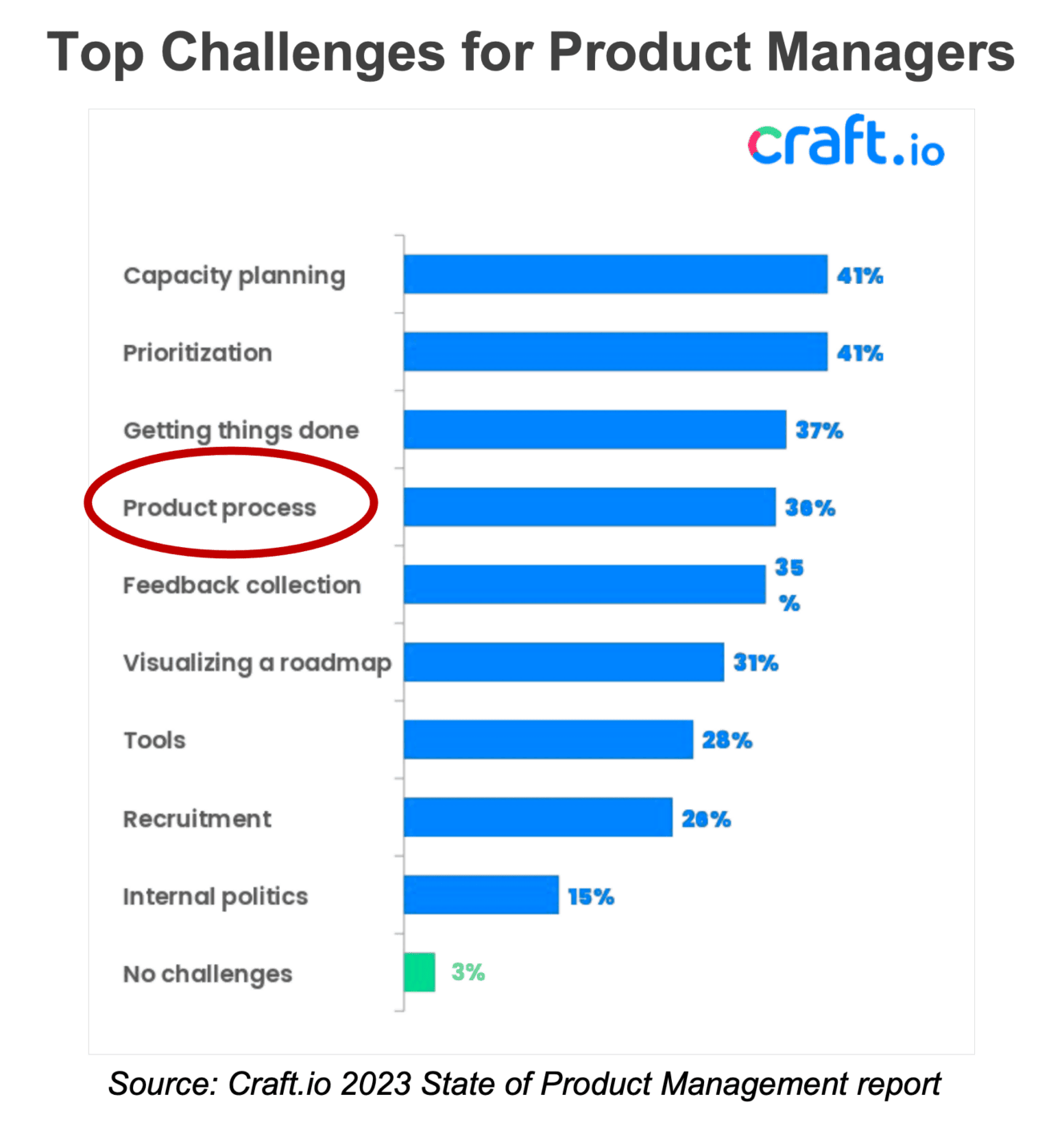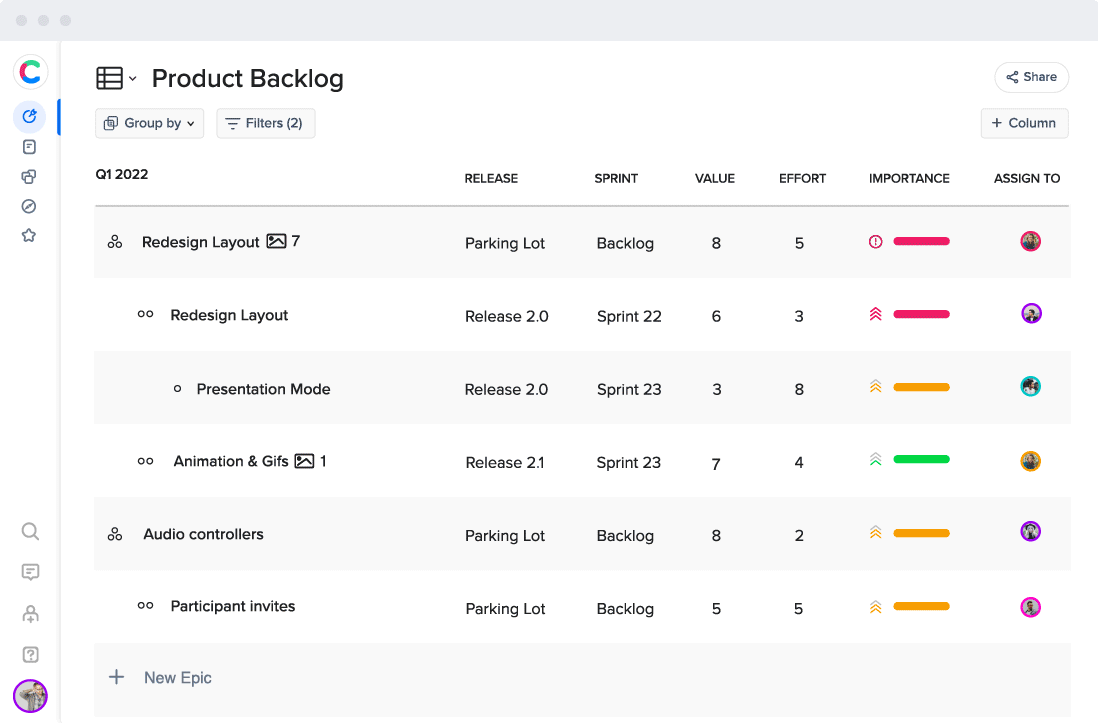What Is Product Planning?
The most comprehensive definition we’ve found for product planning comes from Kenneth Kahn’s book, Product Planning Essentials:
“Product planning is defined as the process of envisioning, conceptualizing, developing, producing, testing, commercializing, sustaining, and disposing of organizational offerings to satisfy consumer needs and wants and achieve organizational objectives.”
Put more simply, product planning is the collection of processes and tools a business uses to plan the creation of a new product and the ongoing market success of that product throughout its lifecycle.
(And if you’d like more great quotes and insights on product management, check out our free eBook: Product Wisdom.)
Key Inputs in the Product Planning Process
Let’s put this into more concrete terms. When a product team sets out to plan a new product, they will face many strategic decisions. Here are some of the most important criteria the team will need to take into account and the questions they’ll need to ask:
- Answering “why”: the product’s reason for being
A product team should never start building a product until they’ve first answered the all-important question, “Why?” Why do we think this solution will succeed? Why does the market need it and why will people pay to buy it?
- The product’s target customer(s)
Who will be buying and using this product? How will we make sure we’re building the right functionality to make the product appealing to these potential customers?
- The competitive landscape
Are there similar solutions on the market, or will our product create a new category? If there are no comparable products, how will we articulate its value in a way that resonates with our target persona? Do no such products exist because our user persona doesn’t actually need them? And if competitive products already exist, how will we differentiate ours from the others?
- The product strategy
Will we build and release a Minimum Viable Product (MVP) to start gathering market feedback as quickly as possible, or will we wait until we’ve built a more complete product before releasing it to the market? If we choose the MVP approach, which functionality will we prioritize for that early version?
- The pricing strategy
Will we segment the product into different offerings — with varying levels of functionality and support — and offer it at different price points? If our product is software, will we offer it for a one-time purchase, on a monthly or yearly subscription? And if we offer the subscription model, will we offer a price break for yearly subscribers?
- The measures of success
After we’ve released our product to the market, how will we gauge success? Will we focus on trial signups, revenue within a specific timeframe, market share, MRR and ARR, or other metrics?
Why Is Product Planning Important?
As you can see from the list above, developing a new product requires answering many important questions. And the examples we listed here represent only a few of the inputs a product team will need to think through as they begin this process.
In fact, simply building this list of product planning steps can be difficult. When we surveyed hundreds of professionals for the craft.io 2023 State of Product Management Report, we learned that one of their top challenges was developing a clearly defined product process.

No product team, regardless of how experienced and committed they are, can guarantee a product’s success. But conducting an intelligent, thoughtful planning process at the earliest stages — and frequently revisiting and revising their strategy throughout the product’s development — can help a team avoid many of the common pitfalls that can lead to building and launching a product that fails to resonate with users. And this is why learning how to develop and execute on an effective product process is one of the key skills for a Product Manager.
Product Planning Examples
Now let’s review a few examples of the steps your team might take to make some of these product planning decisions.
- Determine your MVP’s functionality.
Example: A home appliance manufacturer wants to develop a mobile app that works with their new dishwasher, but the product team isn’t sure which will be the most productive features to put into its MVP. So they send out a survey asking customers questions such as the following:
Which functionality would you be more likely to use in this app: Alerts for maintenance and repairs, or scheduling wash cycles remotely?
Note: This is only one of several approaches you can take to identify the most strategically valuable features for your product’s MVP (or to make other prioritization decisions throughout the product’s lifecycle). Yes, we believe your key user personas can give your team a lot of useful insights. But we also want to caution you: Don’t over-rely on feedback for your product decisions.
- Determine your pricing approach.
Example: A mobile-game maker wants to know whether to make its new app free and ad-supported, or to charge users for the gaming app and keep it free of ads.
So the product team decides to develop a version for app stores that lets users choose whether to download a free version with in-game advertising or to pay a fee for an ad-free version. Then the team tracks how many users select each option, and they use that data to determine whether to make the next version ad-supported only, paid only (without ads), or to leave both options in future versions.
- Determine your strategy (for an existing product portfolio).
Example: A software company has a portfolio that includes both legacy products (in the decline stage of their lifecycle) as well as new products. The product team needs to decide where to allocate its limited development and marketing resources – specifically, whether they want to focus their next few months on retaining existing customers (and devoting resources to the legacy portfolio) or acquiring new customers (devoting resources to newer products).
So the team conducts research to determine whether the legacy products have stopped growing due to market factors or because the company has simply redirected its marketing and sales efforts away from those products and onto the newer ones. The team also performs a market analysis to determine if they have the potential to capture more revenue from focusing on the newer products than if they devoted more development and marketing resources to reviving sales on their more mature products.
Best Practices for Your Product Planning Process
Effective product planning will require different inputs and emphasize different priorities according to your products, customer persona, industry, company size, industry, and other factors. But here are a few best practices that will likely apply to every team’s planning process.
Identify your success metrics.
Like so many other aspects of successful product management, product planning is about making smart strategic trade-offs. You’ll never have unlimited time and resources as a Product Manager, and that means you’ll need to continually make decisions about which items to focus on and which to shelve for later.
A key component of effective product planning is determining a narrow set of success criteria and then shaping your plan around achieving as many of those successes as you can. For example, to the extent your plan is to wow and capture new customers, you might need to divert your development teams’ time away from the less exciting work of maintenance, fixes, and addressing technical debt.
And while this work might not seem as valuable in the short run, you’ll need to focus on those tasks as well if you want to keep existing customers satisfied and retain them for the long-term. Remember the Southwest Airlines scheduling and flight-delay fiasco? Turns out that was directly related to ignoring technical debt for too long.
Make your plan simple and easy to explain.
The product planning process is complicated and messy — requiring brainstorming, research, confusing and even conflicting data points, challenges from coworkers, etc. That’s to be expected. But the strategic plan you develop should be simple to articulate and grasp.
This means, for example, making sure you always use the right roadmap view for each audience – showing only the right level of detail and highlighting only those strategic items that a particular stakeholder will want to see and discuss.
And to prevent the ongoing hassle of having to manually recreate your roadmaps and other strategic documents every time you meet with a different group of stakeholders, you’ll want to use a software platform built specifically for Product Managers – a platform that lets you quickly change views, expand or collapse details, and display any types of data the situation calls for. For a personal walkthrough of such a solution, book your free demo of craft.io.

Bottom line: A complicated product plan (one you couldn’t explain during an elevator ride in a three-story building) should represent a red flag. If you can’t clearly articulate your plan, you’ll have difficulty aligning stakeholders and steering them in the right direction.
Ask stakeholders to review and look for holes in the plan.
Another valuable step in this process is to practice defending your plan with your stakeholders. Invite them to review it, ask tough questions, and even challenge your ideas and conclusions.
Defending your product plan against critics will help you strengthen and sharpen the plan itself. It’s also a great chance to allow your cross-functional team to uncover potential flaws in your plan or at least your ability to articulate your reasoning.
Monitor your progress throughout the plan, and adjust accordingly.
Product planning is not a one-time exercise you conduct only at the beginning of your development. It should be built into all of your product management efforts, and you’ll want to revisit the plan frequently to make sure it still represents your current strategic priorities and capacity levels.
Think of product planning not as an activity but rather as an ongoing strategic process always running in the background of your team’s work and informing your decisions.
Product Planning Tools
One final best practice we didn’t list above: Find the right product management solution to help make your team’s product planning more efficient and effective. That solution should centralize product content to make performing your product planning research and decisions easier. For example, it should offer a platform that lets you centralize your:
- Product strategy
- Roadmap
- User feedback analysis
- Capacity planning
- Product backlog
- Prioritization exercises
For help identifying the right solution for your company, check out our free eBook: The Enterprise Product Management Platform Buyer’s Guide.





































